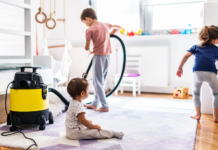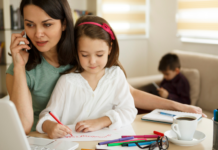 Emotional regulation has a lifetime of experience within us. How we regulate our emotions comes through learned history, pairing, routines, and so much more. Are the ways we regulate our emotions working for us? Are they healthy or not? Do we rely on escaping through our vices; devices, eating, alcohol, and medications?
Emotional regulation has a lifetime of experience within us. How we regulate our emotions comes through learned history, pairing, routines, and so much more. Are the ways we regulate our emotions working for us? Are they healthy or not? Do we rely on escaping through our vices; devices, eating, alcohol, and medications?
What does emotional regulation in parenting look like? It starts with ourselves, as most things often do. We must be our own detectives: understanding, evaluating, and proceeding.
We need to understand how we handle our emotions and evaluate them. Ask yourself, when I feel (blank), I usually (blank). What would happen if this was how my partner, sister, friend, or child reacted to the situation? Do I want to continue this? If not, how can I correct the course?
When we check in with ourselves, honestly, we are working on our personal growth. This is the building block for emotional regulation in parenting; understanding yourself will help you understand and help others.
If we are not in a good place, whether we’re tired, hungry, stressed, anxious, or depressed, we are not in a place to help others. This may cause us to make a rude comment, snap at someone, or even ignore those we love. It happens to us all. It takes noticing this and making an effort to correct it. What values have you been neglecting? How can you access that within your environment?
Who is part of your network? Who is there when you need someone to lean on, check in with, or have a good laugh? Find someone. Ask explicitly. Be bold. Too often, we don’t ask for what we need, and we spend so much time dancing around the situation and hoping it works out in our favor. Let’s be more direct about what we need with ourselves and others.
Be easy on yourself. All humans have emotions! They may not always come out at the “right moments,” but they are part of every human. We need to normalize this for our children and those around us.
A valuable thing you can do when this happens is to explain part of the backstory behind it (make it appropriate to your audience). If I were a mom in this situation, I would explain the age-appropriate information behind the emotion and how to respond to my kids. Feel free to talk it out with yourself in front of them. We call this modeling.
If I’m at work and an emotion caught me off guard, I would give some information appropriate for the audience and ask for a couple of minutes to collect myself and come back. This can help reset the situation by putting time and space between it.
Children learn through many modalities. The life we give them as they grow up ends up being their baseline or “normal.”
We understand this more as we get older and share our family experiences and traditions with others, Junie’s family goes on a walk after dinner and Freddy’s family watches TV after dinner. One is not better than the other. They both exist nonjudgmentally.
This also goes for emotional regulation, for better or worse. Our parents may have been exposed to negative reactions when they were children because that’s what their parent’s parents did to them when they had overwhelming feelings. This is where our own perspective and perspective-taking come into play.
Do we want this type of emotional response to continue to the next generation? If not, how will we change our way of responding and teach our children a new way to respond, too?
What are appropriate ways to respond to our emotions? Check out the chart below for some ideas! I encourage you to make your own list and have it handy to access when you need it. It’s helpful in those moments when our brain isn’t working to full capacity because of our emotional state.
 Mary Dominguez is the founder of Dominguez Behavioral, where she coaches individuals, families and organizations on improving their personal wellness. Mary is a Board Certified Behavior Analyst (BCBA). She merges the science of behavior and holistic coaching practices to bring out positive change in the lives of her clients. She lives in Fairfield County with her children, husband, and dog.
Mary Dominguez is the founder of Dominguez Behavioral, where she coaches individuals, families and organizations on improving their personal wellness. Mary is a Board Certified Behavior Analyst (BCBA). She merges the science of behavior and holistic coaching practices to bring out positive change in the lives of her clients. She lives in Fairfield County with her children, husband, and dog.
























